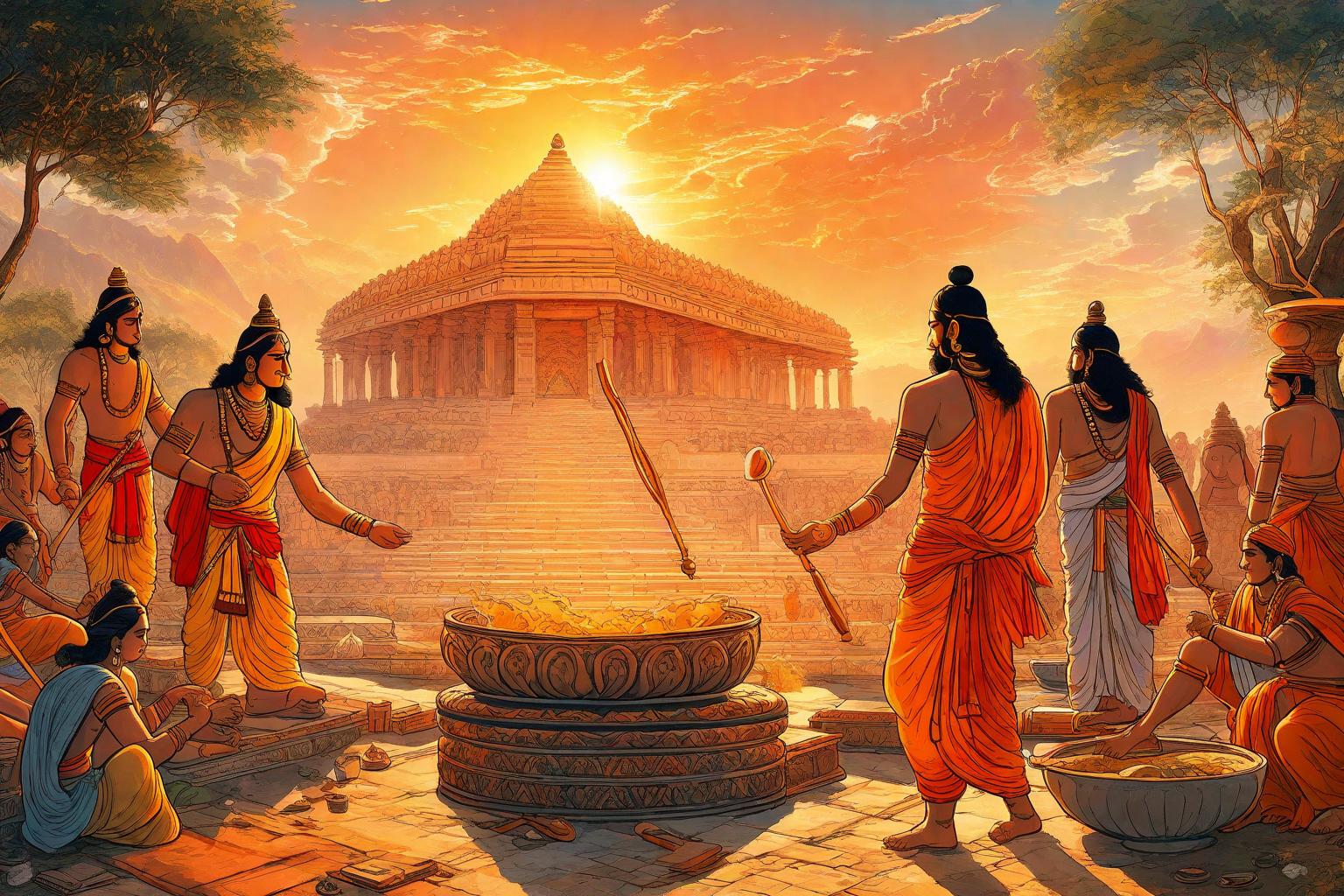Introduction
The annals of human history are an intricate tapestry of civilizations that have emerged, thrived, and often, eventually collapsed. One of the most fascinating among these is the Indus Valley Civilization, also known as the Harappan civilization. Peaking around 2500 BCE, it mysteriously came to an end a thousand years later.
As we delve into unraveling the mystery of the Indus civilization’s decline, we’ll also venture into the rise of the Vedic period in the Indian subcontinent. The Vedas are among the world’s oldest written texts, and their era heralded significant cultural, religious, and societal shifts.
The Decline of the Indus Civilization: Theories and Assumptions
Several theories attempt to explain the decline of the Indus civilization. Let’s consider some of the most trusted and scientifically accepted:
Climate Change and Drought
One of the most popular theories suggests that a shift in climate, more specifically a severe drought, led to the demise of the Indus society.
Weakening River Systems
Another theory proposes that the major process of desertification and the consequent decline of the river systems on which the Indus civilization depended upon, led to a significant population decrease.
Invasion Theory
This theory, although somewhat controversial, speculates that a foreign invasion may have caused the fall of the Indus civilization. Yet, a substantial lack of evidence in the form of devastated cities and war casualties makes this a less likely cause.
Geological Disaster
Another theory posits that a major earthquake might have disrupted the civilization significantly, causing the abandonment of major city centers and subsequent decline.
- In essence, it is likely that a combination of environmental factors, climate change, and potential geological disruptions led to the slow erosion of the Indus culture.
Transitional Period
After the decline of the Indus civilization, a transitional period ensued, sometimes referred to as the Late Harappan phase. During this time, the Indus Valley society gradually transitioned towards more rural and smaller cultures, with parallels seen in contemporary cultures like the Cemetery-H or the Painted Grey Ware culture.
The Rise of the Vedic Period
The Vedic period, also called the Vedic age, began in the Indian subcontinent around 1500 BCE, characterizing the continuation of the Bronze Age and the beginning of the Iron Age. It marked the shift from the collapsing Harappan society to the culture seen in the early historical period in the Indian subcontinent.
- The Beginning: The early Vedic period began with the composition of the Rigveda, the first of the four canonical texts, marking the introduction of the Indo-Aryan culture.
- Religion and Philosophy: The Vedas’ creation marked a crucial phase in the development of religion and philosophy in India, building the foundation for Hinduism and other philosophical concepts.
- Societal Structure: The Vedic society was organized around four social classes or varnas.
- Innovation: This era was also a period of technological and cultural innovation, with the development of iron tools, agriculture, and a decimal system of counting.
Timeline of Key Events
- 3300-1300 BCE: Indus Valley Civilization flourishes and eventually declines.
- Around 1500 BCE: Start of the Early Vedic Period.
- 1500-1200 BCE: Period of the Rigveda, the earliest of the four Vedas.
- 1200-900 BCE: Period of the Yajurveda and Samaveda, the second and third Vedas.
- 900-600 BCE: Period of the Atharvaveda, the fourth Veda and the beginning of the Upanishadic thought’s emergence.
Conclusion
The decline of the Indus civilization and the rise of the Vedic era presents a remarkable insight into human history and societal shifts, telling us a great deal about human resilience, adaptability and cultural evolution over time. It underscores the cyclical nature of civilizations and how societies often rise in the ashes of their predecessors. The lessons drawn from these ancient civilizations continue to provide contemporary societies with valuable insights into culture, society, progress, change, and sustainability.



